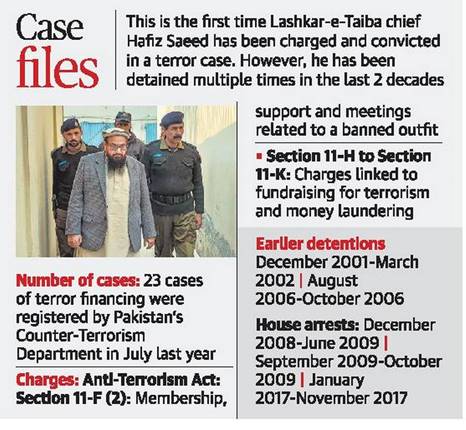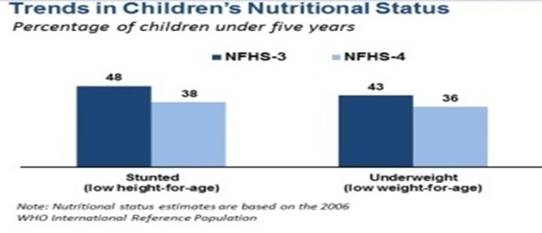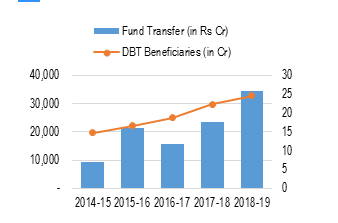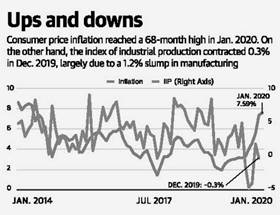DAILY NEWS ANALYSIS 13 FEBRUARY
HEALTH
Explained: COVID-19— How WHO names a new disease
The World Health Organization (WHO) gave an official name “COVID-19” to the disease caused by the novel coronavirus.
The “CO” stands for coronavirus, “VI” for virus and “D” for disease. The coronavirus itself is called “nCoV-2019”.
Process of Naming:
- The WHO, in consultation with the World Organisation for Animal Health (OIE) and the Food and Agriculture Organization of the United Nations (FAO), has identified best practices for naming new human diseases.
- Names that are assigned by the WHO may or may not be approved by the International Classification of Diseases (ICD) at a later stage.
- The ICD, which is also managed by the WHO, provides a final standard name for each human disease according to standard guidelines.
Diseases to be named:
- That is an infection, syndrome, or disease of humans;
- That has never been recognised before in humans;
- That has potential public health impact; and
- Where no disease name is yet established in common usage.
Guidelines for naming the disease:
- Should not refer to a geographical location, an animal, an individual or group of people
- Should be pronounceable and related to the disease
- Names based on geographical location (Middle East Respiratory Syndrome, Spanish Flu, Japanese encephalitis) or based on people’s name ( people’s names (Creutzfeldt-Jakob disease, Chagas disease), or animals names (swine flu, monkey pox) should be avoided.
- They have unintended negative impacts by stigmatising certain communities and economic sectors.
- The best practices include using generic descriptive terms such as respiratory diseases, hepatitis, neurologic syndrome, watery diarrhoea.
- They include using specific descriptive terms that may indicate the age group of the patients and the time course of the disease, such as progressive, juvenile or severe.
- The names should also be short (rabies, malaria, polio) and should be consistent with the guidelines under the International Classification of Diseases (ICD) Content Model Reference Guide.
- “Severe” should be used only for those diseases that have a very high initial case fatality rate.
- “Novel” can be used to indicate a new pathogen of a previously known type.
Reference: https://indianexpress.com/article/explained/coronavirus-covid-19-world-health-organisation-6264479/
WHO to decide on emergency status of Ebola in DR Congo
The World Health Organization last July declared it a “public health emergency of international concern”.
Impact of it:
- Provides greater power to WHO to restrict travel and boost funding.
Conditions for declaring epidemic:
- There have to be no new cases reported for 42 days — double the incubation period.
About WHO:
- Primary role is to direct and coordinate international health within the United Nations system.
- Main areas of work are health systems; health through the life-course; non-communicable and communicable diseases; preparedness, surveillance and response; and corporate services.
- The World Health Assembly is attended by delegations from all Member States, and determines the policies of the Organization.
- The World Health Organization (WHO) is a specialised agency of the United Nations that is concerned with world public health.
- The WHO is a member of the United Nations Development Group.
INTERNATIONAL RELATIONS
Pak. jails Jamaat-ud-Dawa chief Hafiz Saeed for terror financing
Court Verdict:
- He has been sentenced to jail in Pakistan for five-and-a-half years on terror finance charges.
- He was found guilty of “being part of a banned terrorist outfit” and for “having illegal property”.
About Hafiz Saeed:
- He is the alleged mastermind of the 2008 Mumbai terror attacks that killed 166 people and injured hundreds more.
- He is an UN-designated terrorist and head of the Jamaat-ud-Dawa (JuD).

SOCIETY
Kerala imposes Rs. 13 price cap on bottled water
Kerala government action:
- State made it an essential commodity and fixed a ceiling of Rs. 13 per litre.
- Including bottled water in the list of essential commodities enables price control.
- Government had also decided to make BIS standards mandatory for all brands of bottled water.
Impact of decisions:
- Mandatory BIS standard would force unauthorised manufacturers to shut shop.
- It would make drinking water cheaper for the public while ensuring a return on investment for private firms.
About Essential Commodity act:
- The Essential Commodities Act is an act of Parliament of India, which was established to ensure the delivery of certain commodities or products, the supply of which if obstructed owing to hoarding or black-marketing would affect the normal life of the people.
- This includes foodstuff, drugs, fuel (petroleum products) etc.
- The Centre can include new commodities as and when the need arises and take them off the list once the situation improves.
- The State Governments are fully empowered under the Act to regulate production, distribution, supply and prices of the food items which are declared as essential commodities in the respective States.
Ethnic products a big hit among Amazon shoppers
Amazon has been witnessing a crowd of online shoppers for ethnic art and products ever since Gadhika products were launched on the e-commerce platform by the Scheduled Castes and Scheduled Tribe Development Department.
Role of e-commerce in promoting local artisans:
- It enhances reach of the local artisans as they have little budget with themselves to market.
- E-commerce helps in eliminating the middlemen thus provide fair value for the artisans products leading to enhancement in their income.
- They help in taking care of the support activities like logistics and packaging letting artisans focus completely on product development.
- E-commerce platform helps in providing valuable feedback to these groups which can enhance value addition in the products.
- They bring artisans in the wave of consumerism.
- Data generated by the e-commerce groups can further be utilised by the banks to provide loans for upgradation into private firms.
Challenges in doing so:
- Availability of the enough stocks.
- Coordinating and bringing the artisans under a single umbrella is necessary to ensure the regular flow of products.
- Ensuring quality of stocks as pressure to produce goods at rapid speed may affect the quality.
- Ensuring availability of raw material as most products may be seasonal in nature.
- Currently, framework of e-commerce is only focussing on enhancing reach in India. They provide deep discounts for customer traction which make artisans products cheaper. It may not be so in the future time.
Ways to realise maximum potential:
- Provide small amount loan to local artisan for enhancing their production capacity and improving the quality.
- Making cooperative of the artisans.
- GI tag can be effectively used to market strength of these artisans. Consumers are ready to pay for authentic and quality pay.
- Enhanced awareness among the artisans by training them, by developing their own supply chain in order to secure raw material.
Nutrition and the Budget’s fine print

Global hunger index had ranked India 102 out of 117 countries.
Reasons behind Malnutrition:
- Calorie deficiency
- Protein Hunger
- Micronutrient malnutrition
Other reasons:
- Poor uneducated women don’t focus on children nutrition.
- Poor sanitations, lack of access to good quality food, lack of access to mineral drinking water are biggest reasons behind it.
- Birthing child in lower age, poor nutritional status of pregnant women and lack of adequate gap between two children are other reasons.
- Low per capita income, Higher food inflation especially fruit inflation, monodiet (having rice and lentils only) further aggravates the malnutritions.
- Poor implementation of the Policies like ICDS (Integrated Child development scheme), corruption in implementation of Mid-day meal scheme, lack of convergence between different ministries is other policy related causes.
- Poor fund utilization: Many States have only utilized 16% of their allotted funds in National Nutrition Mission.
Methods to mitigate malnutrition:
ICDS scheme: It focuses on improving the nutritional and health status of children in the age group 0-6 years. It involves:
- Supplementary nutrition (SNP),
- Immunization,
- Health check-up,
- Referral services,
- Pre-school non-formal education
Mid day meal: It focuses on improving the nutritional status of children.
Poshan Abhiyan:
- POSHAN Abhiyaan has been set up by Government of India on 18.12.2017 for a three-year time frame commencing from 2017-18 with an aim to reduce the level of stunting in children (0-6 years), under-nutrition (underweight prevalence) in children (0-6 years) and Low Birth Weight at 2% per annum and reduce anaemia among young children (6-59 months), women and adolescent girls at 3% per annum across the country.
- It ensures convergence with various programmes, organising Community Based Events; incentivising States/UTs for achieving goals.
Other Approach:
- Include pulses in the PDS, mid day meal for dealing with protein hunger.
- National Horticulture mission is an attempt to reduce the micronutrient malnutrition.
Challenges in the Schemes:
- Schemes has not been able to utilise the budget allotted to them. Most revised figures have been downgraded from estimate budgeted figures.
- In Poshan Abhiyan, much focus has been on digitisation of the process than achieving the convergence in the schemes.
- National nutrition mission doesn’t focus on making low cost nutrition diet popular among the masses to make nutrition diet available for everyone.
- It doesn’t make focus on disseminating information to public about basic dietary practices for children, adolescents, and mothers. For example, what is a balanced diet on a limited budget.
- National nutrition mission doesn’t focus on breaking down the silos existing between health and women & child ministry to provide a comprehensive package for dealing with malnutrition.
Way forward:
- Focus on nutrition-related interventions, beyond digitisation;
- Intensify the convergence component of POSHAN Abhiyaan, using the platform to bring all departments in one place to address nutrition;
- Direct the announcement to form 10,000 farmer producer organisations with an allocation of Rs. 500 crore to nutrition-based activities;
- Promotion of youth schemes to be directed to nutrition-agriculture link activities in rural areas;
- Give explicit emphasis and fund allocation to agriculture-nutrition linked schemes;
- Ensure early disbursement of funds and an optimum utilisation of schemes linked to nutrition.
ECONOMY
LPG refill price hiked by up to Rs. 149
The price of the non-subsidised LPG refill cylinders weighing 14.2 kg was increased by between Rs. 144.50 and Rs. 149.
- The government almost doubled the subsidy for domestic users.
- The subsidy to domestic users has been increased from Rs. 153.86 per cylinder to Rs. 291.48.
- Subsidy under the Pradhan Mantri UjjwalaYojana has been increased from Rs. 174.86 to Rs. 312.48 per cylinder.
LPG subsidy:

Pahal Scheme:

POLITY
A child cannot be put behind bars, rules SC
Court Observation:
- The police have no right to detain children in conflict with law in a lockup or a jail.
- The child has to be produced before the Juvenile Justice Board (JJB).
- Once a child is produced before a JJB, bail is the rule.
- If for some reason bail is not granted, a child cannot be put behind bars.
- The law is meant to protect children and not detain them in jail or keep them in police custody.
ECONOMY
Bill to regulate pesticide trade gets green light
Union government approves Pesticides Management Bill, 2020, which, the government claims will regulate the business of pesticides and compensate farmers in case of losses from the use of spurious agro chemicals.
Key proposals in the bill:
- Raise penalties on the sale of prohibited or spurious pesticides to Rs. 50 lakh and up to five years’ imprisonment, from the current Rs. 2,000 and up to three years’ imprisonment.
- If there is any loss because of the spurious or low quality of pesticides then there is a provision for compensations.
- If required, the government will form a central fund which will take care of compensation.
Currently, pesticides are regulated through Insecticides Act of 1968.
Industrial production shrinks 0.3% in December
India’s industrial production growth turned negative in December, contracting by 0.3%, mainly on account of a decline in manufacturing sector output.
Data:
- 16 out of the 23 industry groups in the manufacturing sector have shown negative growth during the month of December 2019.
- Manufacturing sector output declined by 1.2% compared to growth of 2.9% in the same month a year ago.
- Electricity generation also dipped 0.1% as against a growth of 4.5%in December 2018.
- Mining sector output grew by 5.4%, compared to a contraction of 1% earlier.
About IIP:
- The Index of Industrial Production (IIP) maps the changes in the volume of production in Indian industries.
- It chooses a basket of industrial products — ranging from the manufacturing sector to mining to energy, creates an index by giving different weight to each sector and then tracks the production every month.
- Finally, the index value is compared to the value it had in the same month last year to figure out the economy’s industrial health.
- It is released by Ministry of Statistics.
Inflation climbs, industrial output contracts yet again

NSO’s Consumer Price Index (CPI) data showed retail inflation had surged from 7.35% in December 2019 to 7.59% in January 2020, mostly due to costlier food items.
Inflation: Inflation is Sustained increase in the general price level. It leads to fall in the purchasing power of money.
Different Indices like WPI (Wholesale Price Index), CPI (Consumer Price Index) measures inflation in India.
WPI (Wholesale Price Index): WPI is measurement of inflation based on Wholesale prices.
- Ministry of Commerce and Industry releases it.
- Headline Inflation is other name for it.
- It does not include services.
CPI (Consumer Price Inflation): CPI is measurement of Inflation at retail prices.
- Central Statistics Office (CSO) releases it.
- It has basket of Services and Manufacturing goods.
Headline Inflation: It is total inflation in economy. It includes price rise in food, fuel and all other commodities.
Core Inflation: Core inflation does not consider the inflation in food and fuel.



1.png)
